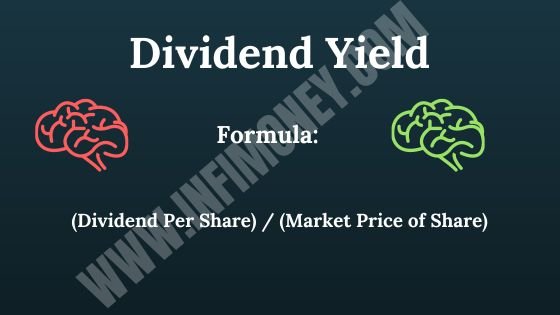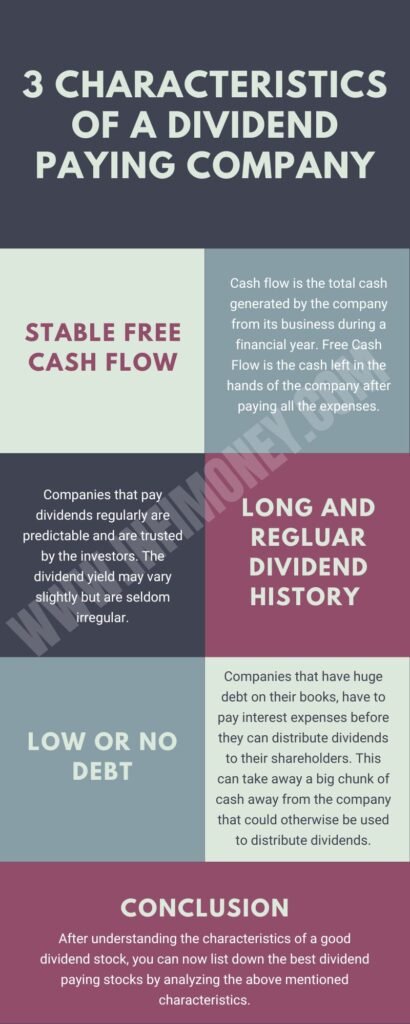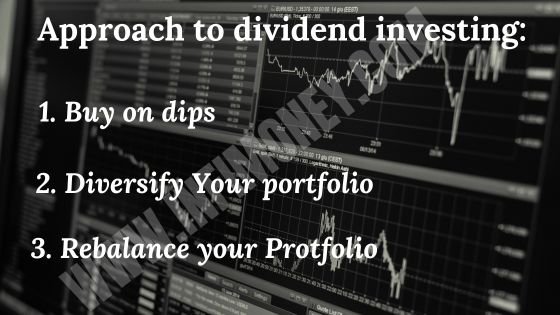Dividend is a part of company’s earnings that it decides to distributes to its shareholders. Large companies with stable business earnings distribute dividend regularly. Investing in dividend paying stocks is a great way to create a passive cash flow income and create long term wealth. Investors that invest in dividend paying stocks, look for either a stable source of regular income, or to use the dividend earned to be reinvested in buying more stocks of the same company.

The dividend payout ratio is a percentage of the total net income the company distributes as dividends to its shareholders. The amount that is not distributed to the shareholders is called retained earnings and is held by the company for future expenses. The ratio is represented in percentage, for example, if a company’s dividend payout ratio is 40%, it means that the company distributes 40% of its net profit as dividends and retains 60% of it.

Big companies like HUL and ITC distribute up to 90% of their net income as dividends. But it is not the percentage of company’s dividend payout ratio that makes a company popular among dividend investors, it is how much dividend a shareholder receives against each share held by him that actually measures company’s dividend friendliness. This is measured by a ratio called Dividend/Share.
Dividend/Share
Dividend/Share is the dividend paid out by the company against its each outstanding share. Dividend/Share is calculated by adding all the interim dividends as well as final dividend declared by the company and dividing it by total number of outstanding shares of the company. Dividend/Share is an important ratio from the point of view of shareholders as it gives them the exact amount they will receive for owning the shares of the company.
Dividend/Share can reveal a lot about the financial and business health of the company. Companies that have less number of shares outstanding but pay a large part of their net income as dividend are considered healthier. To measure the health of the company from a dividend income perspective, just compare Dividend Payout Ratio of the company with Dividend/Share. Higher Dividend Payout Ratio combined with higher Dividend/Share is a clear sign that company is able to generate better profits by issuing limited amount of shares to public,does not need to retain large part of profits, and is generous enough to pay a large part of its profits as dividend.
While both the above-mentioned ratios are useful to measure the health of the company, there is a question from an investor’s point of view that remains unanswered. “How much money an investor need to pay against each rupee of dividend received? And is it worth investing?” The answer can be found using Dividend Yield or dividend-to-price ratio.
Dividend Yield or Dividend to price ratio
Dividend Yield is a measure of how much a company pay as dividends each year relative to its share price. In other words, Dividend Yield is a measure of how much return (in percentage) an investor will get against each share of the company. Dividend Yield is calculated by dividing dividend per share by the market price of the company.
o understand it in a simple way, let us consider a simple example:
There are two companies trading in stock market, Company X and Company Y, both trading at Rs. 100 per share, Company X pays dividend of Rs. 10 per share while company Y pays Rs 6 per share. So while Dividend Yield of company X is 10% ((10/100)=0-1*100=10%) while Dividend Yield of company Y is 6% ((6/100)=0.06*100=6%). While price of both the stocks are same, Company X pays better dividend compared to Company Y.
Having understood basic terms related to dividends, let us now understand how to know if a stock is worth being a part of your dividend investment portfolio?
Characteristics of a Dividend Paying company
Dividends are paid by companies that have stable cash flows, very little or no debt, and a long history of dividend payments. These companies are usually dominant players in their sector or industry and have a durable competitive advantage over their peers that allows them to stay ahead in their game. So what are the characteristics of a dividend-paying stock? Let us understand them in detail, one by one.

Stable Free Cash Flow
Cash flow is the total cash generated by the company from its business during a financial year. Free Cash Flow is the cash left in the hands of the company after paying all the expenses. This free cash flow can be used by the company for two purposes, first to expand their business in the future, second to pay dividends. When companies have enough cash to cover their future expenses, they use the extra cash to pay dividend to shareholders.
Look for at least 5 to 10 years of cash flow history of the company (longer the time period better and more accurate your analysis will be), alongwith its dividend per share record, if both cash flow and dividend are rising with more or less the same rate, it’s a positive sign for a dividend investor.
Long and Regular Dividend History
A company that pays irregular dividends cannot be trusted, as it is not certain if it will keep paying dividends in the future or not. It is thus important for a company to have a long history of regular and stable dividend payments. Companies that pay dividends regularly are predictable and are trusted by the investors. The dividend yield may vary slightly but are seldom irregular.
Look at at least 10 years of dividend history and analyze dividend yield trend. If a company has stable or rising dividend yield, it can be a part of your dividend portfolio.
Low or No Debt
Companies that have huge debt on their books, have to pay interest expenses before they can distribute dividends to their shareholders. This can take away a big chunk of cash away from the company that could otherwise be used to distribute dividends. It is thus in the best interest of shareholders to avoid companies that have huge debt on their books, even if they are generous dividend payers, because a slight rise in interest payments will wipe out all the cash available for shareholder waiting for their dividends to be credited to their account.
Now that we have understood the characteristics of a good dividend stock, you can now list down the best dividend paying stocks by analyzing the above mentioned characteristics. What now remains to understand is how to start investing in these stocks once you have found the best players? Here are some points you should follow while investing in a dividend stock.
Approach to dividend investing
Before you get all excited about dividend investment and jump in with all the capital you have, let me tell you this, dividend investing is not a one time gig, it will take years for you to create a meaningful income to live off dividends and be financially free. Let us now discuss the step by step process about how you should approach to build a portfolio of dividend stocks that acts as a source of passive income for your rest of your life.

Buy on dips
No matter how high the dividend paid by the company is, if you pay too high a price for owning the share of the company, it does not make a good investment. Buying a share of a company at a high price negatively impacts your dividend yield, thus eroding the chances of making good return on your investment.
To make sure you buy the stock at the right price, keep tracking company’s P/E (Price to Earning) ratio. P/E ratio measure the price you pay against each rupee earned by the company. Lower P/E ratio makes sure that the stock is available at a lower price compared to its earnings.
Diversify your portfolio
There is an old saying “Do not put all your eggs in one basket”, diversifying a portfolio is an necessary part of investment strategy, as it mitigates your investment risk in case something goes wrong with one of the companies. Diversifying your investment and distributing your money in different stocks makes sure your portfolio does not go bust in case something goes wrong with one of the companies.
Re-balance your portfolio
This may not sound very obvious but rebalancing your portfolio of dividend stocks is also a risk diversification strategy. Portfolio rebalancing prevents the overexposure of your investment in one stock or sector.
That is why even a dividend investor must keep booking profits once in a while and use the money received from capital appreciation to invest elsewhere. This will not only mitigate the overexposure of your portfolio but will also bring some cash to your table to be invested elsewhere.
Conclusion
Dividend investing is one of the best ways of creating passive income, it provides investors with a regular and steady cash flow, and can be a great alternative retirement fund. Investing for dividend requires patience and time, but with a little bit of research and regular investment in high quality businesses, you can live a wealthy, rich, worry free life.